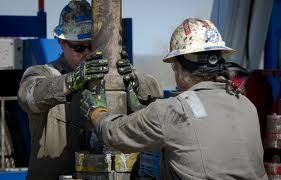
At last, the government has started its quest to develop a liquefied natural-gas export project in the form of liquefied natural gas (LNG) export facility.
The ministry of energy and minerals has asked Statoil ASA (STL) to "convince" BG Group Plc (BG/Statoil to see to it that they build a single LGN plant. The Deputy Minister for Energy and Natural Resources, Mr Stephen Masele asked the Vice President of Statoil, Mr Tim Dodson.
"Despite being a costly project in its implementation, its completion will be very beneficial to the government and the country at large and that is why we are insisting on developing it in dry lands," he said. But the Statoil Vice President said that with 9trillion tcf of the gas already discovered, it is not enough to have a viable LNG project, and noted that they can talk to BG to see the possibility of building the plant through cooperation.
"This would save costs," he said. LNG sites indicate that the construction of an LNG plant costs at least $1.5 billion per 1 mmtpa capacity, a receiving terminal costs $1 billion per 1 bcf/day throughput capacity, and LNG vessels cost $200-300 million. It notes that in the early 2000s, as more players invested, both in liquefaction and regasification, and with new technologies, the prices for construction of LNG plants, receiving terminals and vessels have fallen, making LNG a more competitive means of energy distribution, but increasing material costs and demand for construction contractors have driven up prices in the last few years.
The standard price for a 125,000 cubic metre LNG vessel built in European and Japanese shipyards used to be US D 250 million. When Korean and Chinese shipyards entered the race, increased competition and reduce profit margins and improved efficiency, costs were reduced by 60 per cent.
Costs in US dollar terms also declined due to the devaluation of the currencies of the world's largest shipbuilders, Japanese yen and Korean won. Since 2004, ship costs have increased due to a large number of orders which have increased demand for shipyard slots. The per-ton construction cost of an LNG liquefaction plant fell steadily from the 1970s through the 1990s. The cost dropped by approximately 35 per cent.
However, it shows that, recently, due to materials costs, lack of skilled labour, shortage of professional engineers, designers, managers and other white-collar professionals, the cost of building liquefaction and regasification terminals has doubled. Statoil has so far made the biggest gas finds. Incase the LNG plant is built, the government will pay for the plants through foregone revenue in companies recovering costs.
Statoil, which is teaming up with Exxon Mobil Corp. (XOM), said the Lavani discovery increased estimated resources to about 9 trillion cubic feet of gas, enough "for a commercial development." BG and Ophir Energy Plc (OPHR) are drilling the Papa-1 well, which is targeting 3.1 trillion cubic feet and could help justify a two-train LNG plant. According to the World Bank's Jacques Morisse, these proved and potential reserves can be a game changer for Tanzania.
Yet, he said, extracting and producing is not a simple affair. Massive up-front investments (larger than the country's current GDP of US $22 billion) and new technologies are necessary, while benefits will typically spread over 25 to 30 years. Short of cash and expertise, he said, the country will have to partner with global companies. Potential candidates (British Gas, Statoil) are already knocking on the door.
"Roughly, the host country can expect to get around 40 per cent of total revenues depending on the tax regime and the production sharing agreement (PSA ). This means for Tanzania around 7 per cent of its projected GDP or about a third of its current fiscal revenues if all above reserves can be exploited.
These fiscal resources, while considerable, will not be sufficient to transform Tanzania," he said. He said that if Tanzania wants to avoid the famous curse associated with natural resources, the lesson from experience is straightforward - transparency. All negotiated contracts with producing companies, the selection of projects, and payments must be monitored and audited by an independent body and ultimately disseminated to the public at large.
What is LNG? Liquefied natural gas, or LNG, is natural gas in a liquid form that is clear, colourless, odourless, non-corrosive, and non-toxic. LNG is produced when natural gas is cooled to minus 259 degrees Fahrenheit through a process known as liquefaction. During this process, the natural gas, which is primarily methane, is cooled below its boiling point, whereby certain concentrations of hydrocarbons, water, carbon dioxide, oxygen, and some sulfur compounds are either reduced or removed.
LNG is also less than half the weight of water, so it will float if spilled on water. A majority of the world's supply comes from countries with the largest natural gas reserves: Algeria, Australia, Brunei, Indonesia, Libya, Malaysia, Nigeria, Oman, Qatar, Trinidad, and Tobago. LNG is transported in double- hulled ships specifically designed to handle the low temperature of LNG. These carriers are insulated to limit the amount of LNG that evaporates.
LNG carriers are up to 1,000 feet long and require a minimum water depth of 40 feet when fully loaded. In 2004, there were approximately 140 LNG ships operating worldwide.
Source: Tanzania Daily News
We use cookies to improve your experience. By continuing to use our site, you accept our Cookies, Privacy Policy,Terms and Conditions. Close X